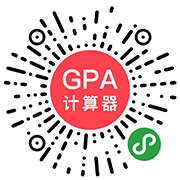即将到来的2016年SAT改革首当其冲的就是写作,与现行SAT写作相比,新SAT写作在出题形式和考察重点上均呈现出截然的差异。
1、出题形式
现行SAT写作的题目包括prompt和assignment两个部分,prompt字数有70个左右,旨在为考生提供一种写作思路,并不对写作构成硬性的约束,考生需要在25分钟内完成约400字的文章。新SAT写作要求考生首先阅读一篇700字左右的文章,然后分析和评论作者是如何展开议论来说服读者的。写作时间是50分钟。
2、考察重点
现行SAT要求考生针对某一个话题给出自己的观点,并用具体事例支持并论证这一观点。从某种意义上讲,新SAT写作是阅读的延伸,不需要考生就某一话题给出自己的观点和论述,而只要求对给出的文章进行分析。新SAT写作主要从四个方面考察考生的分析能力,即例证引用、行文逻辑、修辞手法和语言运用。本文具体分析《新SAT考试细则》中的第一篇文章“保护黑夜”中的答题点。(《细则》并没有给出完整的范文,而是以注解形式对答题要点进行了示范。)
A. 例证引用
分析三种例证引用:指明具体数字、引用权威数据、呈现事实依据,并详细指出它们在引出下文、增强说服力、支撑观点等方面的作用。如:
The writer uses this statistic as evidence to inform his subsequent claim that we “are rapidly losing night’s natural darkness.”。
The presentation of facts and evidence supports the claim that follows at the end of the paragraph that “without darkness, Earth’s ecology would collapse.”
B. 行文逻辑
分析三种行文逻辑:递进、呼应前文、让步,并具体指出它们在推进逻辑发展和引起读者共鸣等方面的重要性。如:
The writer moves from evoking fear to reassuring readers that there is a solution to the problem of light pollution.
The argument concludes by recalling the “irreplaceable value and beauty” of darkness. That this darkness is being lost, as evidenced over the course of the writer’s argument, serves as a final appeal to readers’ emotions.
C. 修辞手法
分析三种修辞手法:比喻、对比、反问,这些特殊的手法可以增强表达效果、使内容生动形象、引起读者的思考和共鸣。如:
The writer compares light pollution to the effects of a “bulldozer,” a machine that can be used to ravage land. This imagery dramatizes the destructive potential of light pollution.
The use of rhetorical questions encourages the reader to consider a world without Van Gogh’s beloved painting and what Van Gogh’s vision inspires in us all. The suggestion of a world without such artistry and the notion that darkness is “invaluable to a soulful life” are also designed to evoke an emotional reaction in the reader.
D. 语言运用
分析两种用词:描述性语言可以增加视觉效果并激发读者的想象;谨慎措辞使读者对某一观点形成感性认识。如:
The descriptive words used in this sentence add visual intensity, evoking the wonder of the night sky.
The writer chooses his words carefully in this paragraph in order to shape readers’ perceptions and bolster his claims. For example, he argues that we are using too much light when less is needed by referring to light being “wasted.” He also suggests how easily the problem of light pollution might be addressed, using “simply” to describe what “other communities” are doing.
以上这些分析跟一些高中或大学的文学课或英语精读课的学习内容是一致的,要求考生不仅能准确的找出论证特点和语言特色,还要具体说明其作用。









 大马U.S.News排名
大马U.S.News排名 2022大马QS排名
2022大马QS排名 马来西亚QS亚洲排名
马来西亚QS亚洲排名 高考后留学美国
高考后留学美国






 香港大学
香港大学 香港中文大学
香港中文大学 香港科技大学
香港科技大学 香港理工大学
香港理工大学 香港城市大学
香港城市大学 香港浸会大学
香港浸会大学

